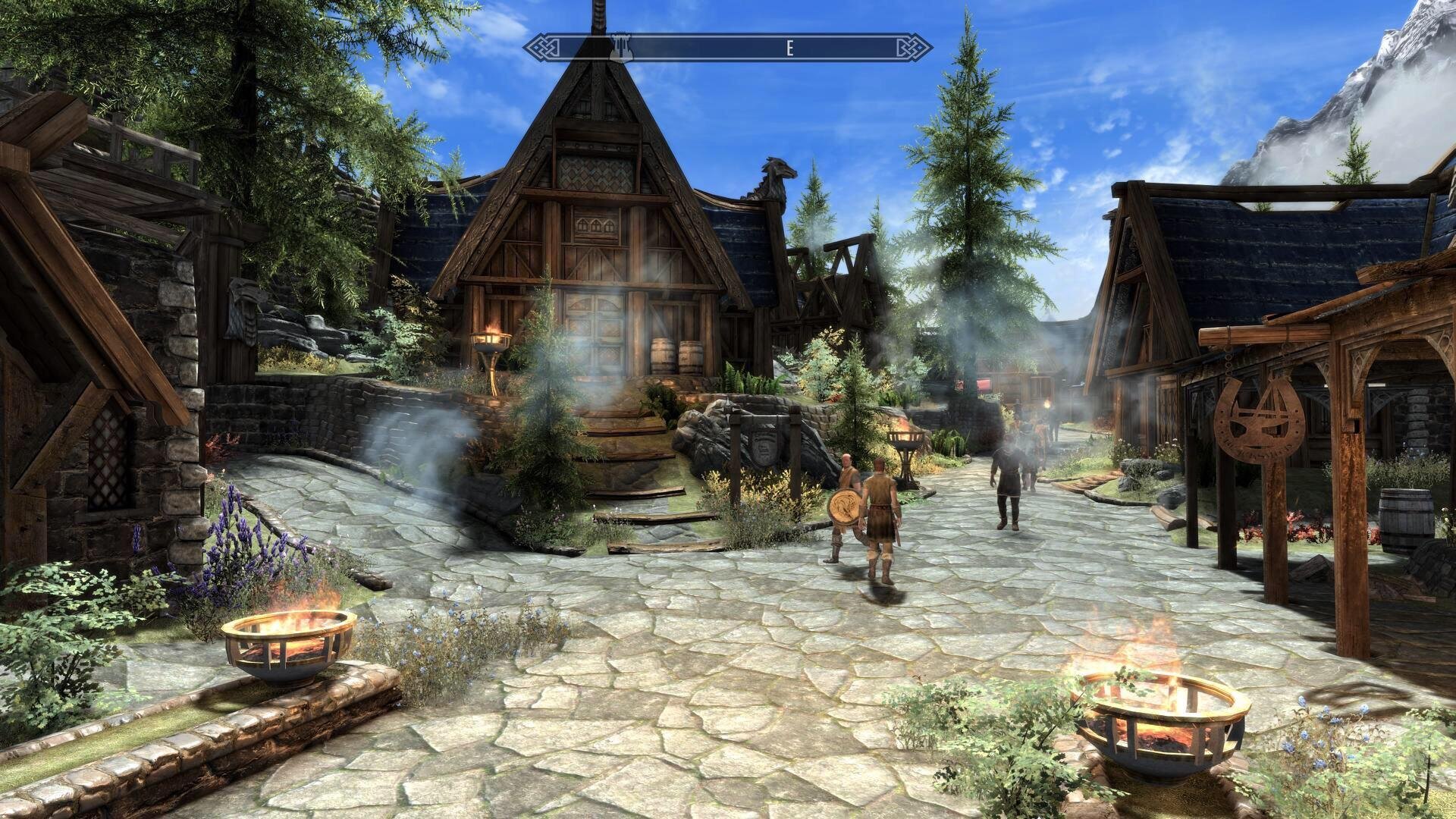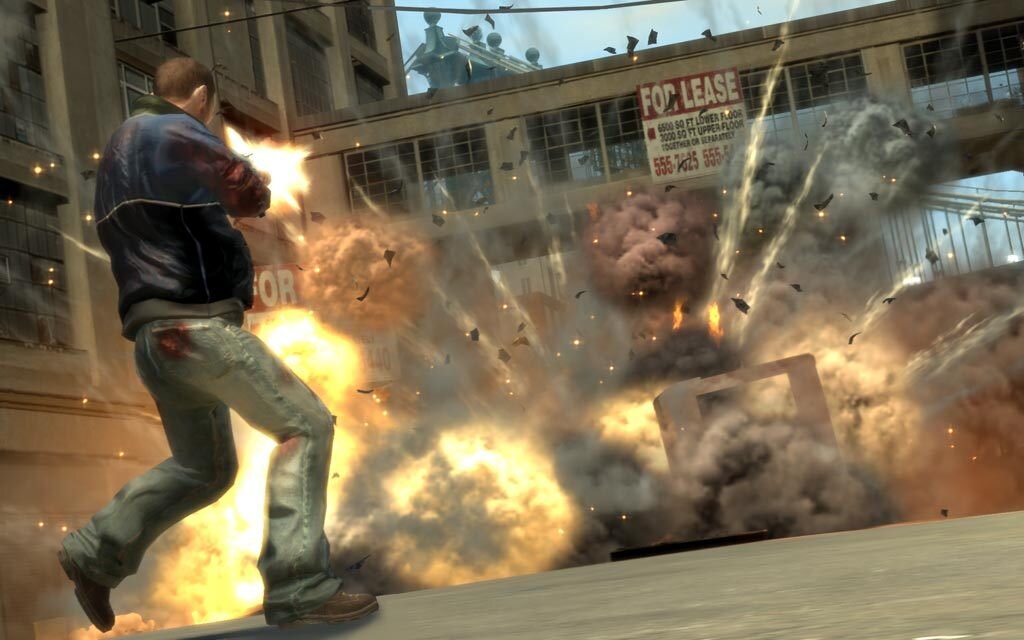[Note: this is an older, unpublished essay from November 2011 that I’m releasing here since it felt like there were some ideas in it worth preserving. It’s fascinating to see my current obsession with the polarities of order and chaos reflected in an essay that’s nearly a decade behind me.]
***
This is not good. Nope, not good at all.
Even playing as Uncharted 3’s eternally upbeat hero Nathan Drake, I’m feeling increasingly pessimistic about my chances of survival. The hold of the soaring cargo plane in which I’m having a gun fight just burst into flame. This is less than one minute after the burly man in the turban nearly heaved me off the open back gate. Then a hole tears open in the side of the aircraft, creating a roaring vacuum, sucking crates and people out the side. I hug the opposite wall, but suddenly the whole front of the plane rips free and I’m hurtling through the air against blue sky. Not knowing what else to do, I mash the analog stick this way and that to steer Drake’s plummeting free fall. Wait, there’s a crate flying through the air like a comet toward me. If I steer to the right a bit more, I just might be able to grab hold of – WHEEEEEE!
Clinging for dear life to the yellow netting around that crate and hammering triangle to release the parachute leaves me feeling like a death-defying superhuman. Of course, when I come back down to earth - both literally and figuratively - and consider the breathless slice of game design I’ve just experienced, I’m forced to acknowledge that Drake’s survival owed nothing whatsoever to my gaming prowess. He was destined to grab that crate no matter how clumsily I pawed at the controller. Every player who gets sucked out of that plane is going to enjoy the same giddy trajectory from start to finish.
On the opposite end of the spectrum, you’ve got Elder Scrolls V: Skyrim, which drops you into a sprawling open world and then invites you to wander off in search of fun and adventure. The town of Whiterun lies near the start of the game, and there’s apparently someone there who can help you. But first you’ll need to examine your map to chart a course. Then once you’ve found Whiterun, you’ll need to figure out where this particular NPC lives. Then if it’s night, you’ll need to use the manual wait command to speed morning’s approach. This is hardly what you’d describe as taut pacing. Granted, pacing is mostly beside the point in a game like Skyrim. If you feel like spending 20 hours wandering about in the wilderness, collecting fungus and wildflowers, you never feel the game’s developers squinting at you disapprovingly for ignoring the epic quest they’ve written and engineered. Slackers are welcome in Skyrim (which goes a long way toward explaining all the beards).
In terms of the value we assign to different approaches to gameplay design, it’s easy to discount the linear action-movie template and argue that games have a solemn responsibility to give us both freedom and a giant sandbox in which to exercise it. The word “linear” has become something of a dirty word. Critics who casually drop the L-word in a review can rip a game’s still-beating heart out of its ribcage, and seem positively diplomatic in the process. Somehow the word “linear” has a more damning effect than infinitely scrappier adjectives like “broken” or “janky” or “unfinished” or “ropey”. It’s a masterpiece of passive-aggression.
Is the free-wheeling possibility space of an open world game really a more noble achievement of game design? Should the ceaseless expansion of player agency be the pursuit of any self-respecting video-game developer.
How did we even get to this point?
LEFT TO RIGHT
In prehistoric times when side-scrolling plumbers walked the earth, the vast majority of console games unspooled in a linear fashion. Nobody raised a word of complaint. Just as your eyes naturally follow this sentence across the page, game progression similarly proved a one-way street – a relentless march to the right side of the screen. Gameplay simply involved trying to overcome whatever obstacles the game designer tossed in your way during that journey. And player choice revolved solely around the decision of whether or not to ignore your parents when they told you to shut off the Nintendo and go to bed.
By the time the current console generation kicked off in 2005, the open-world game epitomised for many the promise of what the interactive medium could be. A host of developers still tipsy on the fumes expelled by the hijacked cars speeding around Grand Theft Auto III’s Liberty City tried their hand at the open-world game. Enter Saints Row. Enter Just Cause. Mercenaries. Stranger’s Wrath. Oblivion. Assassin’s Creed.
Rockstar’s Dan Houser didn’t pick the name Liberty City out of a hat. Set in a facsimile of New York City, the word “Liberty” evoked the statue of Lady Liberty perched atop Ellis Island. But it also evoked the range of freedom you had within that world - including the freedom to completely ignore the game’s story and go for a reckless, pedestrian-splattering joyride. The way Liberty City’s world resembled our own merely amplified the sense of virtual reality. Rockstar had tapped into a more potent take on role-play, one that blurred the line between the real world and its exaggerated onscreen fiction. There’s a problem with giving players freedom, though - they might actually choose to exercise it.
MIDDLE GROUND
You don’t have to search very far outside video-game culture to find echoes of the linear vs. open world debate. Religious scholars have been clawing each other’s eyes out for years over whether or not God sits up in heaven stage-managing every little thing that happens on earth or merely strokes his beard while humanity runs amok with free will. There are even non-religious terms for discussing the real-life version of game linearity. Every time you hear somebody say a life event – a death, a romantic relationship, etc – was “meant to be”, they’re basically clinging to a version of life that has some linearity built in. After all, isn’t it “meant to be” that Mario saves Peach? Nintendo certainly doesn’t give you any other option.
Just as an atheist would turn his head and spit at the suggestion that some divine being is scripting the key events of his life, many critics are similarly flustered by game designers who make them feel like a spectator to – as opposed to the author – of their game experience.
RPGs and open-world games such as Grand Theft Auto get around this by letting you pursue quests in whatever order you choose or simply brush the main story aside altogether and go for an exploratory wander. Series like Uncharted and Gears that aim to deliver the interactive equivalent of a summer blockbuster movie, must manage pacing in a stricter fashion and funnel players through its experience in much the same way a tour bus will only show you the most interesting thoroughfares of a city.
Humans are naturally drawn to structure and purpose, which is why a degree of linearity exists in even the most dauntingly sprawling game worlds. Game designers have figured out clever methods of masking such linearity, but it’s there. If you have any doubt, just hit ‘start’ and open your RPG quest log. Most logs will record each new objective so you have an idea of where to go next. Or a game will drop a marker on your map. The glittery bread crumb trail Lionhead introduced in Fable 2 was a particularly heavy-handed method of setting out a linear path for players to follow.
LOSING THE PLOT
We crave linearity to the point that we’ll find ways to overlay it, should we find it lacking in a game. Dark Souls is quite possibly the least linear mass-market game ever designed, which is part of what makes it so profoundly unsettling. There’s no quest log with stated objectives. No mini-map to guide your steps – just raw exploration and danger. Inevitably there are points where you have no idea what you’re supposed to do next, when you’ve lost track of that guiding line, and this is where most players either wander until they lose patience or they break down and reach for the most crass linearity supplement in existence - the online walkthrough.
So what kind of future should we wish for? It’s not enough for video games to simply give us broad agency – Heavy Rain isn’t automatically a masterpiece just because David Cage allows us to choose our own variation on his hackneyed psychological thriller. And, as exciting as it is to help Nathan Drake escape from a burning chateau or a sinking cruise ship, those feats were always destined to be Naughty Dog’s story, not ours.
Games that hem us in judiciously, yet provide a rich world to unpack, will resonate on the deepest frequency. The genius of Arkham Asylum’s forward-thinking design was the balance it achieved in funnelling progression through the ordered interior arteries of the asylum, while interspersing open-air spaces to diffuse claustrophobia. The grappling hook allows Batman vertical freedom of movement within those interior spaces, so even narrative linearity is tempered by the freedom in how you choose to engage a room full of thugs.
The game’s sequel Arkham City stumbles slightly in its transition to an open world. The city view from atop ACME chemical plant is a joy to behold, but a nightmare to make sense of in terms of gameplay structure. There’s a cautionary tale in all this - heightening player freedom isn’t always the right choice. After surviving that Uncharted 3 plane crash in the Rub’ al Khali desert and looking out over that vast, featureless desert, I would’ve killed to see a linear concrete path winding over those dunes, telling me exactly where to go next.




